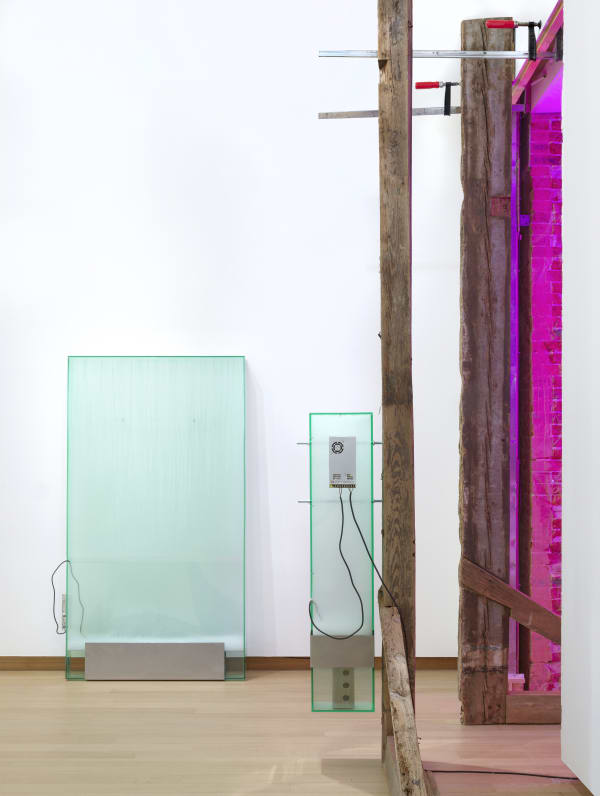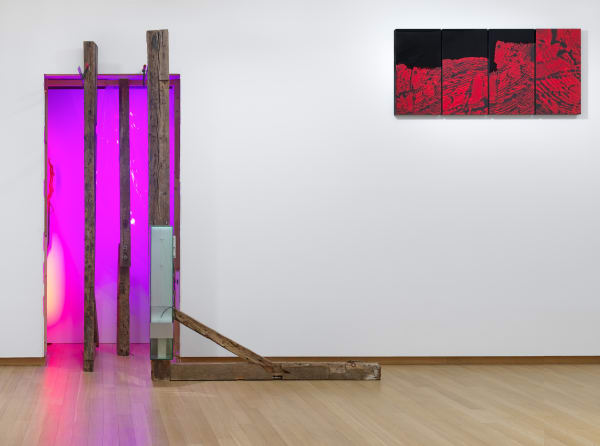Saskia Noor van Imhoff: "30”N 45”E, Plots and Unwritten Splinters" part of the exhibition "When Things Are Beings"
Saskia Noor van Imhoff’s oeuvre examines systems, hierarchical structures and ideas about collecting. While addressing the underlying dynamics that lead to decisions about what we keep for the future, and what we decide to dispose of, she questions the idea of a collection as a knowledge system and a mechanism that selects, differentiates and classifies. She approaches these structures using a variety of media such as photography, sculpture and architecture, which merge into a whole in her installations.
30”N 45”E, Plots and Unwritten Splinters (2022) is an installation of wall objects and an architectural intervention - which has broken through a wall. The work is made up of elements from modern agricultureand a 19th century farmhouse with the surrounding land, such as weathered wooden truss beams, grow lights and obsolete utensils. Van Imhoff analyzed thematerial, geographical and ideological origins of these diverse objects. In her research into the origin and history of use of the various materials, Van Imhoff discovers and explores the relationship between the spontaneous and the planned, the organic and the artificial, and between nature and culture. In doing so, she provides insight into how materials and objects have a broader conceptual origin. Dating material is more complex than pin pointing a single moment, and attributing meaning always arises from subjective considerations with political implications and personal motivations.
30”N 45”E, Plots and Unwritten Splinters reveals the traces of time and remnants of human actionsin a historic and rural place.
The visual properties of these remains have been magnified, distorted or enhanced. A wall in the exhibition hall has been broken through, exposing the brick structure of the museum building from 1895. It is an example of how Van Imhoff’s artistic working method dismantles structures around the presentational value of objects. Cultivation and conservation are related to her subject matter. These terms mean not only to cultivate and preserve, but also to maintain, refine, civilize and develop with care. Characteristics that are closely linked to the public art museum that originated in the 19th century and was assigned by the government the task of imparting cultural taste and knowledge to the people.
The work points to the fact that structures and compositions are always temporary. Van Imhoff creates a field of tension by re-organizing elements from a monumental building and its surroundings. In doing so, she places the parts in a new constellation that gives them a different meaning: context and knowledge play an essential role in the perception and appreciation of an object. At the sametime, the current form of presentation is once again only a temporary constellation that will eventually turn into a new form of cohesion.
The installation could be defined as an ‘organic collection’, a kind of ecosystem referring to the totality and interaction between matter, water,atmosphere and plants. Here both living and non -living components play a role that undergo processesof forming, cultivating, processing and finishing.Each element embodies the passage of time andtransformation, becoming an example of transience.
For more information, please visit the website of the Stedelijk Museum Amsterdam.









